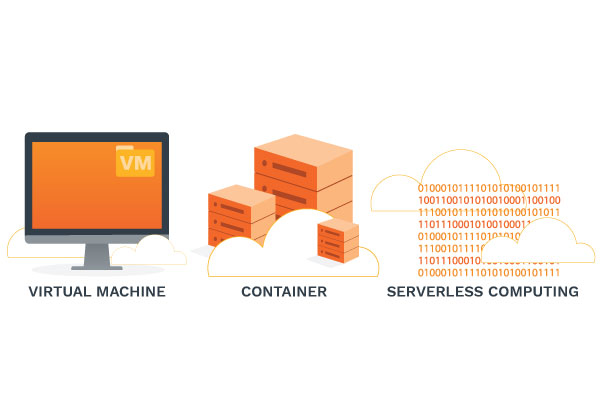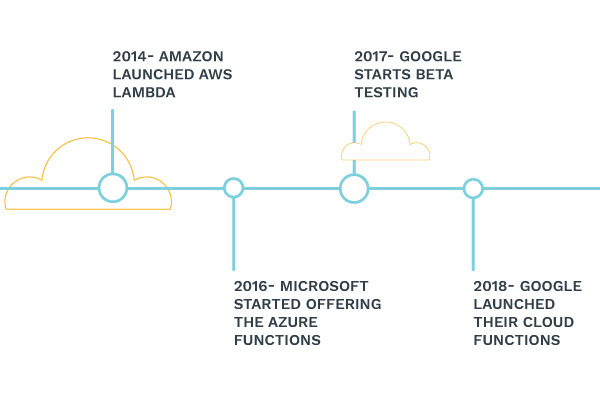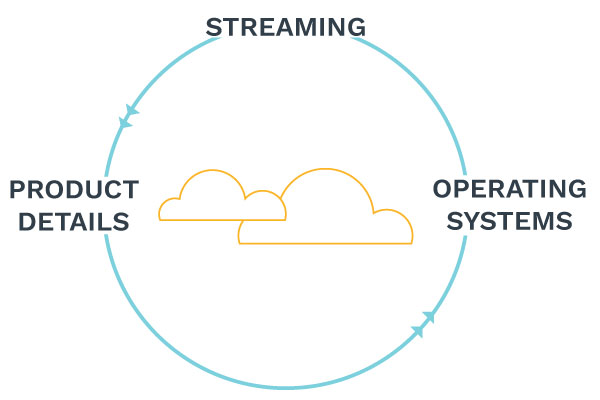A complete understanding of Serverless computing is key to any business considering building a cloud computing strategy. Serverless computing is a novel technology that allows developers to create cloud-based applications without having to manage the underlying infrastructure. Instead, a cloud service provider manages all the processes behind code execution. Serverless computing will manifest itself in companies popularly as function platforms as a service (fPaaS) environments.

It is estimated that, by 2025, nearly 50% of global firms will be relying on Serverless computing, up from the current 20%. As a key decision-maker in your firm, you may want to understand the key capabilities, benefits, limitations, and possible applications of Serverless computing.
The Need for Serverless Computing
Serverless computing reduces the complexity of IT operations by eliminating the need to set up, configure, procure, and manage infrastructure. Serverless computing reduces overheads by providing backend services on an as-used basis. It also eliminates the need to manage infrastructure, which means developers can create applications faster.
There have been rapid developments in cloud computing over the past decade and a half. Such advances include: development of Containers, the introduction of cloud native services, the Virtual Private Cloud, the growing importance of backup and recovery, The Growth of Software as a Service, and the hybrid cloud. These developments have necessitated the use of cloud-based applications in growing firms. The network and infrastructure management needs of data centers, however, make on-site cloud servers an expensive affair.
Majority of the cloud service providers are opting to offer Serverless computing to help many firms in the industry to satisfy the infrastructure prerequisites of their cloud-based applications. Serverless computing transfers the responsibility of managing infrastructure to the cloud service provider, which enables your development team to focus on creating, testing and deploying applications.
Some people may confuse Serverless computing with Virtual Machines (VMs) or containers. There are, however, a few key differences. Each of these techniques is defined by the layer it virtualizes and how computational scaling is performed.

A VM emulates a real computer and allows users to execute programs and applications without the need for physical hardware. The Virtual Machine is, thus, a computer file designed to mimic an entire computer.
A container, on the other hand, virtualizes an operating system. This allows administrators to run multiple workloads on one OS instance. Containers provide a platform to deploy, manage and scale Microservices independently but more efficiently than VMs.
Serverless computing allows developers to develop code and then run it on a cloud-based server owned and managed by a third party. So this does not mean an organization doesn’t need servers. Instead, the firms outsource server ownership and maintenance.
VMs virtualize hardware while containers create a virtual representation of the Operating System. Serverless computing virtualizes and scales using functions. With Serverless computing, the vendor is responsible for the provisioning, monitoring, scaling, and configuration of computing infrastructure. This makes the approach suitable for projects with a specific set of characteristics. Serverless computing is great for projects that run infrequently, are tied to external events, and come with highly variable/unknown scaling requirements.
The History and Current State of Serverless Computing
While it is a relatively novel computational approach, computing is quickly gaining adoption, particularly in the public cloud environments. The first demonstration of Serverless computing came in 2014, when Amazon launched AWS Lambda, their cloud service. In 2016, Microsoft started offering the Azure Functions, getting their head in the Serverless computing game. In July 2018, Google Launched their cloud functions, which had been in beta testing since 2017. While the three serve the major portion of the Serverless computing market, other players are also in the running. IBM’s cloud functions that run on the Apache OpenWhisk Platform are worth noting in this category. AWS Lambda is the most advanced and prominent platform, having been in the market for the longest time.

Just like in all software realms, the Serverless computing market has benefited from the evolution of software stacks. These integrate the different elements necessary to build an application. A stack is made up of a programming language in which code is written, a framework that gives structure to code, and triggers that will stimulate the platform to execute code. You can combine entities in each of these categories depending on firm needs and the chosen vendor.
Frameworks help guide the process of application development. For current needs, Amazon offers the Serverless Application Model (SAM), which is an open-source, native framework. One of the most popular open-source and cross platform frameworks is called Serverless. This unified framework ensures a unified user experience in all Serverless platforms. Another popular framework, Apex, helps integrate non-mainstream programming languages into the Serverless software stack. In organizations, the choice of Serverless computing framework varies with cloud needs and IT budget allocation.

The Abilities of Serverless Computing
Serverless functions fundamentally eliminate the need for manual management of infrastructure. This gives firms the ability to:
- Run code as functions without having to provide and manage infrastructure such as Virtual Machines, Servers and containers.
- Autonomously provide and scale a runtime environment, including all the resources needed for code execution.
- Access extra features for development environments. These features include logging, tracing, monitoring, and debugging.
Benefits of Serverless Computing over Traditional Servers
Serverless computing has become a staple in most companies’ cloud strategies. The approach reduces overheads associated with IT operations, rather automating the management of infrastructure. With 69% of C-Suite executives pointing to process automation and transformation as the central theme of their digital agendas, Serverless computing offers the opportunity to make company resources go farther. Some of the benefits of Serverless computing include:
Simpler IT Operations
With Serverless computing, VMs and containers lie in the infrastructure, making them the responsibility of the cloud service provider. Taking the costs of infrastructure setup and management reduces operational overheads, which will not be as high as those of firms where developers have to directly interact with containers and virtual machines. Traditional servers don’t offer fully managed services. Developers in these cases have to augment their time between focusing on core business and performing administrative tasks.
Automatic Scalability
When a Serverless computing environment is introduced to the public cloud, infrastructure scaling becomes flexible and autonomous. This makes Serverless computing particularly attractive for unpredictable workloads. Therefore, the scalability of cloud-based applications is not limited by the underlying infrastructure. With traditional servers, you have to worry about policies and protocol before you scale up your code.
Cost-Effectiveness
Serverless computing environments follow the standard “pay-as-you-go” cloud models. This means that firms only pay for IT resources when application code is being executed.

Improved Productivity
With Serverless architecture, developers focus on application design. All infrastructure management aspects are transferred to the cloud service provider. This also makes businesses more agile since a productive developer workforce will post shorter time-to-market for new projects. Traditional Servers often require management and maintenance, which takes some productivity out of a firm’s workforce.
Drawbacks of Serverless Computing
Architectural Limitations
Serverless architecture imposes several limitations on code execution. Such limitations include initialization latency and limited function runtime. Serverless architecture also lacks server-side state support which makes it less suitable for consistent workloads.
Vendor Lock-In
While Serverless architecture allows firms to enjoy resource capabilities offered by the cloud service provider, applications will need extensive re-engineering when being shifted from one cloud platform to another.
Reduced Control
With a Serverless environment, clients must use the runtime environment as it is. Companies have very little control of the service.
Skills Gap
Programming for a Serverless environment requires the acquisition of new application architecture skills and practices. These skills are currently scarce on the market. This may reduce the rates of adoption and delay project delivery times.
Application Affinity
With Serverless computing, applications should be programmed into discrete functional units, which are executed when there are triggers. This means that companies need to repackage existing applications to fit this structure.
Where Can You Use Serverless Computing in Your Firm?
Cloud Operations
The most intuitive use of Serverless computing capabilities will be the execution of code that manages cloud applications. Companies can use Serverless functions that are triggered when there’s a signal for an infrastructure event. Netflix, a streaming service, uses Amazon’s Lambda to grant users access to a large collection of media content. Firms can use Serverless computing to implement the back end of such large, complex cloud operations as: live streaming, product catalogues and company information systems.

Implementation of Microservices
Serverless computing can help combine small, independent services to generate an application suite. fPaaS can help realize Microservices that are frequently called. Companies can leverage Microservices architecture like Kubernetes to split large applications into functional units. Organizations can, therefore, use Microservices to augment their entire technological ecosystems.
Internet of Things (IoT) Platforms
IoT relies on edge computing to deliver telemetry data from sensors. The interval time distribution for these inputs is usually unknown, highly variable or erratic. With Serverless functions, this data can be captured, stored, or used to trigger a new event that generates a control signal toward the edge. Serverless computing will help create a logical data set from the very small payloads generated by IoT devices. Serverless computing will, therefore, be used by companies to manage smart factories, vehicle fleets and manage intelligent logistics.
Factors to Consider When Preparing to go Serverless
To keep your business ready for Serverless architecture, you should consider three aspects of the firm:
- Application development- with server management responsibilities out of the way, firms should focus on creating strong development teams. This will allow developers to share full responsibilities for the development, testing and deployment of software.
- Risk and Safety- Since the firm no longer owns the Operating System, security will be a huge cause of concern. The IT department will focus on controllable aspects, such as code integrity and password best practices.
- Infrastructure and Operations- Since Serverless technologies are complimentary, it is important to rethink IT expenditure. Infrastructure & development teams should work closely with the development team to ensure successful deployment of developed applications.
Serverless computing offers the promise to shift company IT budget and labor capacity from operations and toward development. This gives development teams to acquire new skills and work autonomously. This opportunity to improve productivity and business agility is what most growing businesses need for full cloud adoption.
Categories: Cloud, Managed IT Services











